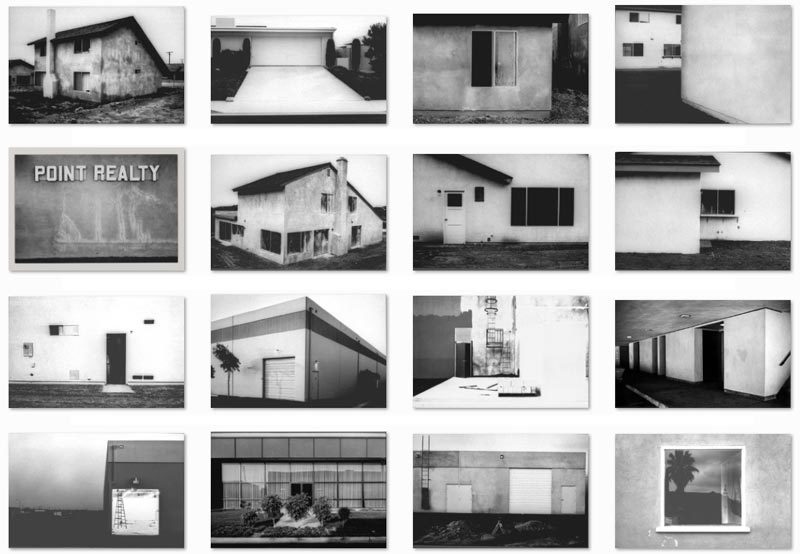Topographics focus on capturing man altered buildings, like parking lots, suburban housing and warehouses. Topographics translates to the arrangement of the natural and artificial physical features of an area.
In 1975, William Jenkins used the term “New Topographics” to describe a group of American photographers whose work shared a similar aesthetic, focusing on the overlooked aspects of urban landscapes. Their photographs were formal, black-and-white images that signified the influence of man made development on the environment. Key photographers associated with this include Robert Adams, Lewis Baltz, Nicholas Nixon, and Bernd and Hilla Becher, who were all inspired by the presence of man-made structures.

What was the New Topographics a reaction to?
It acts as a response to the mainstream influence of idealised, suburbanised landscape of photography, which intends to glorify the elemental aspect of the natural world. This type of photography counteracts it and opposes the natural beauty by taking images of man made buildings.
Robert Adams

Robert Adams is an American photographer, who has focused on the changing landscape of the West in America. His work first had significance in the mid-1970s through his book ‘The New West’ and his participation in the exhibition New Topographics: Photographs in 1975. He’s famously known for counteracting against the idealised, beauty of the world by capturing images of the generic world.
His images

This image above is a mixture of his new topographic images. Adams uses a range of natural landscapes with manmade buildings/creations, to highlight the difference humans make in the natural world. He shows the significance in the geometric shapes of each element (natural and created), and how we create generic, plain buildings. In some images, he bases the images solely on these buildings, to create a sense of what the world has become.
Typologies
Typologies in photography are a way of taking pictures of similar things in the same style. The photographer uses the same angle, lighting, and setup for each photo to show how the subjects are alike and different. Bernd and Hilla Becher are an example of this method, as they took many photos of buildings like water towers and factories in a very simple, repeated way. When these photos are shown together, we can see patterns and small details we might not notice in just one picture. This photographic style enables people to look closely into objects we see everyday.
Bernd and Hilla Becher
The renowned German artists Bernd and Hilla Becher (1931–2007; 1934–2015) changed the course of late twentieth-century photography. Working as a rare artist couple, they focused on a single subject: the disappearing industrial architecture of Western Europe and North America that improved the modern era. They began collaborating together in 1959 after meeting at the Kunstakademie Düsseldorf in 1957. Bernd originally studied painting and then typography, whereas Hilla had trained as a commercial photographer. After two years collaborating together, they married.

Image Analysis

